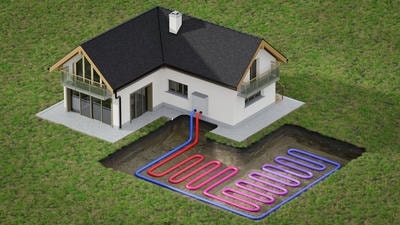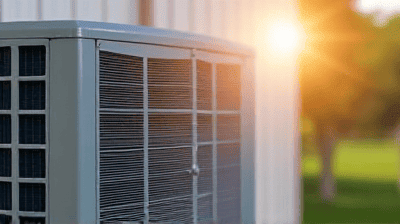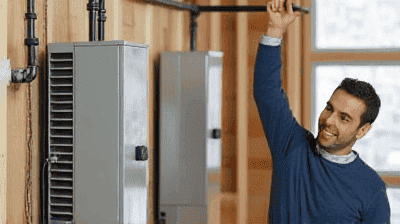
In our quest for sustainability and reducing energy consumption, the demand for efficient heating and cooling systems has never been greater. With traditional heating, ventilation, and air conditioning (HVAC) systems often leading to high energy bills and significant environmental footprints, many homeowners and businesses are exploring greener alternatives. One such innovative solution is the geothermal heat pump system. Recognized for its efficiency and sustainability, geothermal heat pumps are becoming increasingly popular in residential and commercial applications.
Geothermal heat pumps (GHPs) are renewable energy systems that utilize the constant temperature of the earth to provide heating, cooling, and hot water for residential and commercial buildings. Unlike conventional HVAC systems that rely on the combustion of fossil fuels or electricity generated from nonrenewable sources, geothermal systems harness the Earth's natural energy.
At their core, geothermal heat pumps operate on a simple principle: heat transfer. The earth below the surface maintains a relatively constant temperature throughout the year, varying only slightly between seasons. This constant temperature can be accessed and used in heating and cooling processes.
The system consists of three main components:
Ground Loop: A series of pipes buried underground that circulates a heat transfer fluid—usually water mixed with antifreeze. The ground loop can be arranged in different configurations, such as horizontal, vertical, or pond loops, depending on available land and installation preferences.
Heat Pump Unit: Located inside the building, this unit extracts heat from the ground loop in winter and transfers it indoors. Conversely, in summer, it removes heat from the indoor air and transfers it back into the ground.
Distribution System: The conditioned air (heated or cooled) is delivered throughout the building using a conventional duct system or, in some cases, via radiant floor heating.
There are primarily three types of geothermal heat pump systems, each with its own advantages and suitability for specific applications:
Closed-Loop Systems: The most common type, closed-loop systems circulate heat transfer fluid through a continuous loop underground. These can be configured horizontally or vertically based on the property’s space availability and soil conditions.
Open-Loop Systems: These systems draw groundwater from a well, extract heat, and then discharge the water back into the ground. They require a sufficient water supply and proper environmental considerations to avoid depleting local aquifers.
Hybrid Systems: Combining geothermal heat pumps with standard HVAC systems, hybrid systems optimize energy usage by relying on the most efficient energy source based on availability and demand.

The growing popularity of geothermal heat pumps can be attributed to a variety of compelling advantages:
Geothermal heat pumps are among the most energy-efficient heating and cooling systems available. For every unit of electricity consumed, they can produce three to four units of heating or cooling energy. The efficiency of these systems is reflected in their high performance ratings, with seasonal energy efficiency ratios (SEER) and heating season performance factors (HSPF) significantly outperforming traditional HVAC systems.
Utilizing renewable energy from the earth means that geothermal heat pumps significantly reduce greenhouse gas emissions compared to conventional systems. In addition, their increased efficiency leads to lower energy demand and reduced reliance on fossil fuels.
While the initial installation cost of geothermal heat pumps can be higher than traditional HVAC systems, the long-term savings are substantial. Homeowners can expect reduced energy bills—often 30 to 60 percent lower—due to the systems' efficiency. Additionally, many regions offer tax incentives and rebates for investing in geothermal technology, which can offset initial costs.
Geothermal heat pumps typically have a longer lifespan than conventional systems, often lasting over 20 years for the indoor unit and 25 to 50 years for the ground loop. Their underground installation protects the components from the elements, reducing wear and tear. Maintenance requirements are also minimal; regular checks and filter changes are usually sufficient to ensure optimal performance.
Geothermal heat pumps can provide heating, cooling, and even hot water, making them a versatile option for year-round climate control. Their ability to meet diverse heating and cooling requirements makes them suitable for various applications, from single-family homes to large commercial spaces.
Despite their numerous advantages, geothermal heat pumps also face certain challenges and considerations for potential users:
The upfront costs of installing a geothermal heat pump can be significant. While these systems save money over time, the initial investment may deter some homeowners. However, financing options and incentives can help make geothermal systems more accessible.
Depending on the type of ground loop system chosen, significant land may be required for the installation of the piping. Vertical systems are more compact but often require drilling deep into the ground, while horizontal systems need ample surface area.
The feasibility of geothermal heat pumps can depend on local geology, soil conditions, and groundwater availability. Conducting a site assessment before installation is essential to determine the best strategy for a specific location.
In some regions, installing geothermal heat pumps may require permits or adherence to specific regulations, particularly for open-loop systems. Homeowners should check local guidelines before committing to installation.

Installing a geothermal heat pump involves several steps:
Site Assessment: A qualified contractor performs an assessment to evaluate the property’s suitability for a geothermal system. Factors considered include soil type, available space, and existing HVAC systems.
Design and Planning: Based on the assessment, a system design is developed that outlines the type of system—closed-loop, open-loop, or hybrid—that best meets heating and cooling needs.
Ground Loop Installation: The ground loop is installed next, which may involve excavating trenches or drilling boreholes.
Indoor Components Setup: The heat pump unit is installed indoors, connecting it to the existing ductwork or radiant heating systems.
System Testing: Once installed, the system is tested to ensure it operates correctly, adjusting the settings for optimal performance.
The future of geothermal heat pumps is closely tied to the broader shift toward renewable energy and sustainable building practices. As awareness of climate change continues to grow and governments move toward stricter regulations on carbon emissions, the demand for efficient HVAC systems like geothermal heat pumps is expected to rise.
Continued research and development in geothermal technology will lead to improved system efficiency, reduced costs, and enhanced performance. Innovations in drilling technology and heat exchanger design will play a crucial role in expanding geothermal heat pump adoption.
As the technology becomes more mainstream, installation costs are likely to decrease due to competition, economies of scale, and advancements in installation techniques. Public awareness and education initiatives will also make geothermal systems more accessible to a broader audience.
The integration of geothermal heat pumps with smart home technology will allow for more efficient energy management. Homeowners will be able to monitor and control their systems remotely, optimizing performance based on usage patterns and energy prices.
Government incentives and support for renewable energy technologies will continue to drive growth in the geothermal sector. Subsidies, tax credits, and other financial incentives for homeowners and businesses investing in geothermal heating and cooling will further enhance adoption rates.

Geothermal heat pumps represent a powerful solution in the quest for energy-efficient and sustainable heating and cooling systems. By harnessing the Earth's natural energy, these systems provide significant benefits in terms of efficiency, cost savings, and environmental impact. As technology advances and public awareness increases, geothermal heat pumps are poised to play a pivotal role in shaping the future of the HVAC industry.
For homeowners and businesses considering a switch to a geothermal heat pump, it is essential to conduct thorough research and engage with qualified contractors. While the initial investment may be higher than conventional systems, the long-term savings, environmental benefits, and increased comfort make geothermal a wise choice for a sustainable future.